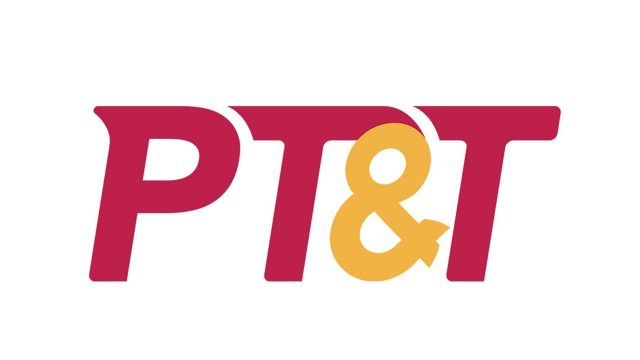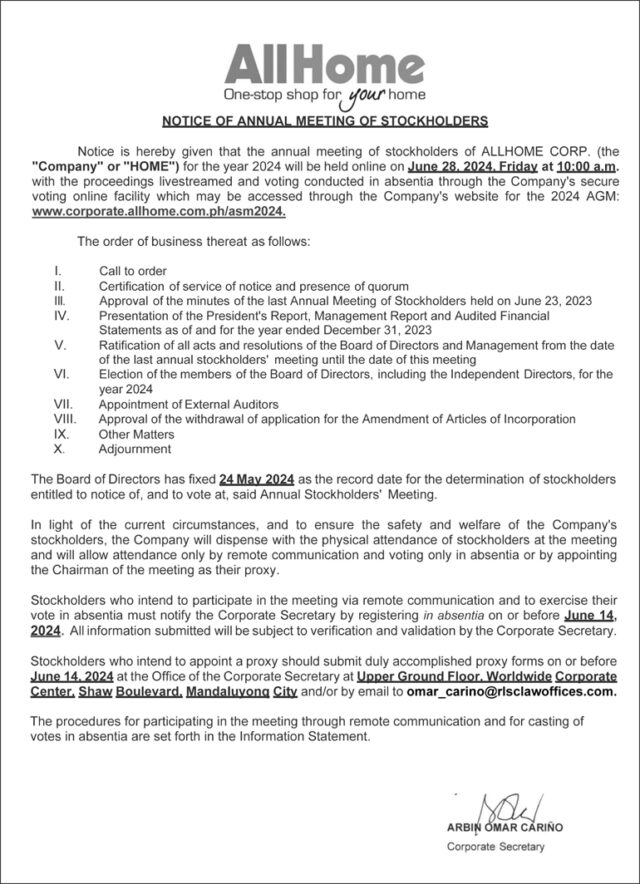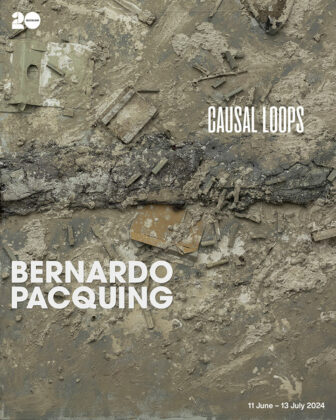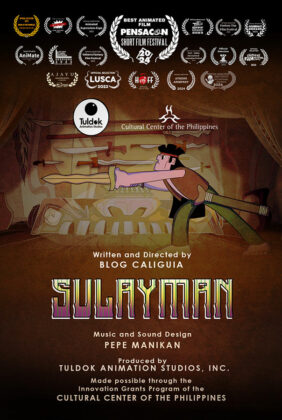VIBRANT in color and reminiscent of scenes from the everyday, Nice Buenaventura and Constantino Zicarelli’s Tropikalye took shape from an online index of photographs to a public display of items and visual excerpts as part of the first Benilde Open Design and Art grants. The collection of examples of contemporary Filipino aesthetics combines that which is tropical and that which is found on the street, referred to in the title by the Tagalized Spanish word kalye.
The installation at Benilde, Polymer and Palm, takes from the index to showcase prints of peculiarities like mint green-painted cement houses and plastic tablecloths wrapped around coconut trees (a rat dissuader). They’re complemented by actual objects, from pieces of commonly used floral bedsheets to striped poles topped with leaves (a street parking deterrent).
“Once you set out on the streets and look for these aesthetics, you’ll find that there is a lot. These are strange, humorous, and clever ways in which Filipinos adapt to tropical and postcolonial life and conditions,” Nice Buenaventura told the media at the launch of the Benilde Open on May 22.
“The images tend to seem abstract, but if you scan the QR code, you can read the text that explains why these images are interesting. They are also accessible via the @tropikalye Instagram,” she added.
The duo is one of 27 grantees chosen to receive P300,000 to realize design and art projects encompassing various fields. The two hope to use a chunk of the grant money to publish a Tropikalye book.
Meanwhile, Michael Vea puts a spotlight on the lively landscape of Filipino Sign Language (FSL) literature with CURIOUS, a video exhibition of literary works as performed by five deaf fellows. Displayed on screens are short stories told with expressive and creative hand signs, translated with subtitles, a blending of introductory FSL with innovative storytelling.
“Those who can hear have their own art forms. For us who are deaf, we have our hands and expressions,” said Mr. Vea in FSL. He indicated one of the screens, where the narrator signs a story by going through the ABCs, each letter representing an action that furthers the narrative.
“Visual vernacular uses deaf signs in a creative way. This project shows our literary tradition because it emphasizes how we tell stories and deepen our own culture,” he added.
GIVING MORE OPPORTUNITIES TO ARTISTS
The Benilde Open Design and Art is a grant-giving body organized by De La Salle College of Saint Benilde (CSB) and the Embassy of Switzerland. For its first edition, the showcase is installed across multiple floors of the CSB campus, where students and visitors can browse through the works.
It invited creatives from all fields of design and art, like video, textiles, puppetry, visual art, apps, augmented reality, sculpture, photography, and software. Out of 324 proposals, 10 from professionals and 17 from students each received the P300,000 grant to fulfill their projects.
Rita Nazareno, one of the Benilde Open convenors, told BusinessWorld that there is a “big need for grants for artists and designers.”
“The existence of grant-giving bodies is important because they enrich the practice and the process of those in need of funds. Residencies are great, but this provides more help, and it allows budding works to be seen by so many more people,” she said at the launch.
PUPPETRY
Developing Puppetry in the Philippines by Mikayla Teodoro, a selection of intricate puppets that made Benilde Open’s final cut, greets visitors with a life-sized hyena that the puppet master can operate to lift a paw or open a jaw. Advanced 3D-printed mechanisms allow for functional anatomical joints in the head, the tail, and the legs, a wonder to behold for casual passersby.
Ms. Teodoro, who finished her master’s degree in puppetry in the United Kingdom, hopes to use the grant to bring all that she’s learned to establish advanced puppetry in the Philippines. In the West End in London, her works have been part of theater productions like My Neighbor Totoro, Spirited Away, Life of Pi, Doctor Who, 101 Dalmatians, and Lion King (hence the hyena).
“It’s really baby steps, but it’s exciting because it’s so small,” she said in a statement. “And because the Philippines is so rich in indigenous materials and craftsmen, you can get everyone involved when it comes to telling stories through puppetry.”
EXPLORING UNFAMILIAR CONCEPTS
For Gabe Mercado, whose project Unraveling Baguio’s Inner Tapestry: A Psychogeographical Exploration Through Sensory Encounters entails literal exploring, Benilde Open has the potential to become an important part of the country’s creative landscape.
“I love how they’re pushing the envelope in art and design and being open to new ideas. For example, my work is something you can’t place squarely in art or design,” he told BusinessWorld.
The project is a collaborative intervention that deconstructs dominant tourist narratives. Using an online guide to create an unscripted walk, it encourages participants to explore a city’s (in this case, Baguio’s) multifaceted identity. The guide was put together with the help of literary, sound, and performance artists, photographers, designers, and architects.
“We curate the starting point, but we veer away from specific areas and tourist spots. There are prompts that help one get lost further and also a record of past journeys of others,” Mr. Mercado explained.
Psychogeography, meant for urban settings, is more or less the practice of getting lost without an agenda. “It’s a thing people can naturally do. It’s not a curated experience and has no involvement with LGUs or local establishments, because there’s no motivation to show the good parts. The steps are to find a starting point, get lost, and make something of it,” he said.
EXPLORING The GRANTEES
Walking through CSB’s floors of unique concepts presented by grantees is a fulfilling exploration of creativity in itself, as emphasized by Mr. Mercado.
There’s RJ Fernandez’s Nightingales, a short film that centers on the daily life of three Filipino nurses working in the United Kingdom’s National Health Service.
There’s Rambie Lim’s Exploring the Use of Philippine Silk in Tausug Pisyabit Weaving that bridges the gap between suppliers and Sulu weavers to continue producing traditional Tausug textiles, even as imported silk thread is now being replaced by more accessible acrylic and polyester.
Lala Monserrat’s Maria, Maria, in collaboration with Russ Ligtas, Geric Cruz, and Jazel Kristin, puts the spotlight on collaborative performance, photography, film, and sculpture work among LGBTQ+ (lesbian, gay, bisexual, trans, queer plus) locals of the coastal town of San Antonio, Zambales.
“There’s so much creativity and culture to explore all over the Philippines, and even beyond, and I’m sure efforts like ours have barely even scratched the surface,” convenor Ms. Nazareno said of the variety of works and sheer talent on display at the Benilde Open.
The “Benilde Open Design and Art 2024” exhibition is on view until June 30 on several floors of the CSB’s School of Design and Arts campus in Pablo Ocampo St., Malate, Manila. Free tours for the public and a lineup of talks and activities on the works will be held throughout the run. — Brontë H. Lacsamana




















